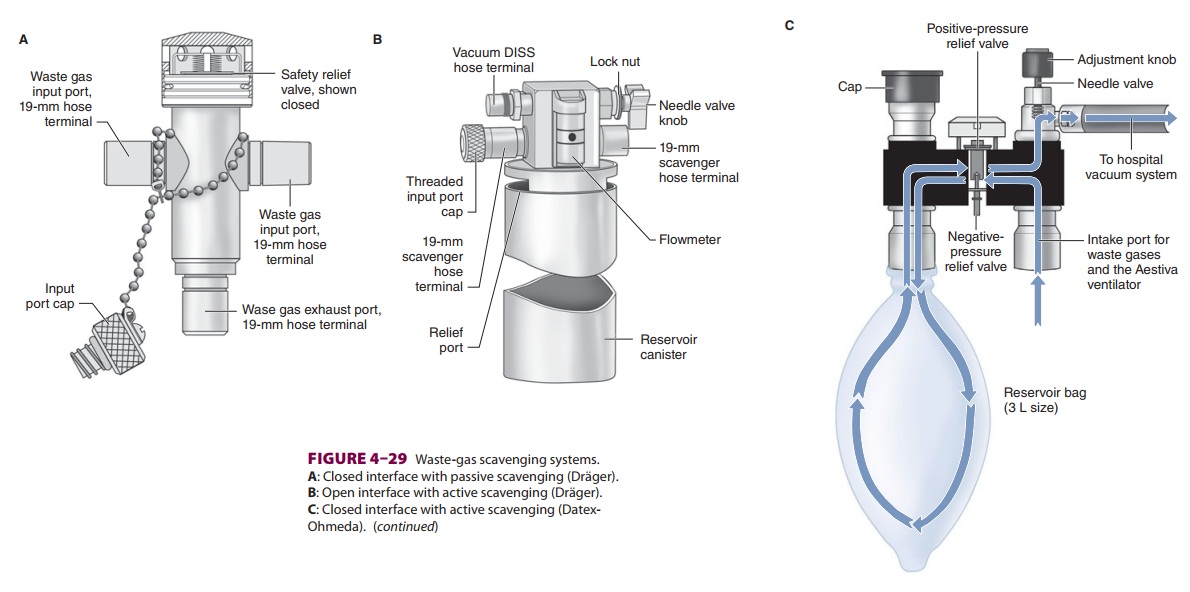Chapter: Clinical Anesthesiology: Anesthetic Equipment & Monitors : The Anesthesia Machine
Anesthesia Waste Gas Scavengers

WASTE GAS SCAVENGERS
Waste-gas scavengers dispose of gases
that have been vented from the breathing circuit by the APL valve and ventilator
spill valve. Pollution of the operating room environment with anesthetic gases
may pose a health hazard to sur-gical personnel. Although it is difficult to
define safe levels of exposure, the National Institute for Occupational Safety
and Health (NIOSH) recom-mends limiting the room concentration of nitrous oxide
to 25 ppm and halogenated agents to 2 ppm (0.5 ppm if nitrous oxide is also
being used) in time-integrated samples. Reduction to these trace levels is
possible only with properly functioning waste-gas scavenging systems.
To avoid the buildup of pressure, excess
gas volume is vented through the APL valve in the breathing circuit and the
ventilator spill valve. Both valves should be connected to hoses (transfer
tub-ing) leading to the scavenging interface, which may be inside the machine
or an external attachment (Figure 4–29). The pressure immediately
down-stream to the interface should be kept between 0.5 and +3.5 cm H2O during normal operating condi-tions. The
scavenging interface may be described as either open or closed.
An open interface is open to the outside
atmosphere and usually requires no pressure relief valves. In contrast, a
closed interface is closed to the outside atmosphere and requires negative-and
positive-pressure relief valves that protect the patient from the negative
pressure of the vacuum system and positive pressure from an obstruction in the
disposal tubing, respectively. The outlet of the scavenging system may be a
direct line to the outside via a ventilation duct beyond any point of
recirculation (passive scavenging) or a con-nection to the hospital’s vacuum
system (active scavenging). A chamber or reservoir bag accepts waste-gas
overflow when the capacity of the vac-uum is exceeded. The vacuum control valve
on an active system should be adjusted to allow the evacuation of 10–15 L of
waste gas per minute. This rate is adequate for periods of high fresh gas flow
(ie, induction and emergence) yet minimizes the risk of transmitting negative
pressure to the breathing circuit during lower flow conditions


(maintenance). Unless used correctly the
risk of occupational exposure for health care providers is higher with an open
interface. Some machines may come with both active and passive scavenger
systems.
Related Topics